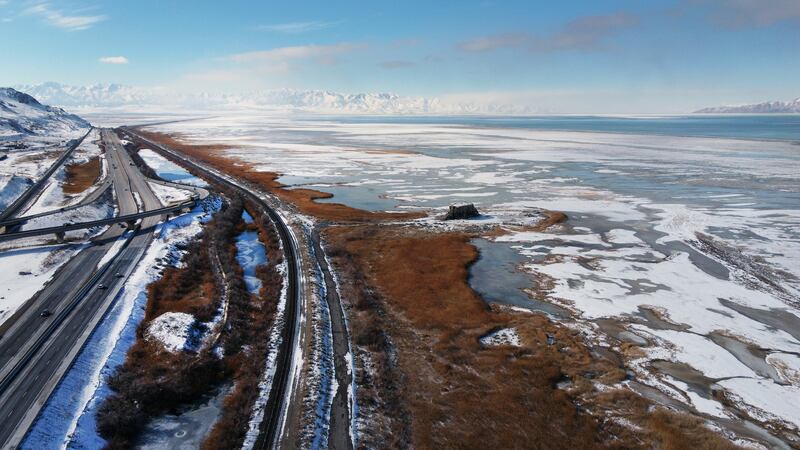Time can change a person’s perspective.
In 1996, I wrote a column that described, accurately, the “great enigma” that the Great Salt Lake was for Utah residents. Relatives or friends would come to the state for the first time and inevitably ask to see it. But people who live here knew such a visit, especially to the south shore, would be smelly and filled with brine flies.
The lake was, I wrote, “like a temperamental movie star who happens to live in your backyard. Everyone wants to come see him, but you feel an obligation to explain first that he’s drunk, he hasn’t bathed in several days …”
Even a spokeswoman for the Salt Lake Convention and Visitors Bureau told me back then that exasperated tourists would come into their downtown office and say, “I want to see the lake, and please don’t try to tell me I really don’t.”
Accurate, yes, for the time. But I’m guessing few people think that way now. That temperamental star is in danger of dying, and Utahns are acutely aware of its importance — to our environment, our future prosperity and our own lives. We would do just about anything to bring it back to full strength — smell, flies and all.
So it seems curious that lawmakers on Wednesday would, without much discussion at all, kill a resolution that would have recommended a goal to bring the lake level up to 4,198 feet. That’s a minimum level experts believe is needed for covering mudflats, allowing boats to sail and bringing salinity levels back to normal. That’s according to the sponsor of SCR6, Sen. Nate Blouin, D-Salt Lake.
The Utah Legislature is winding up what it has called “water week.” Lawmakers have focused on several legislative solutions, not only for the lake but for statewide water issues, including towns that now have to truck water in because their own wells and springs have run dry.
They have proposals to incentivize people to rip up lawns and plant desert shrubs, to make agriculture more water-efficient, to manage salinity levels and to create a Great Salt Lake Authority that would help coordinate and streamline all the efforts from a variety of sources.
This comes atop several bills passed last year.
Despite this being a wet year, rain and snow aren’t all that is needed. The state needs to make sure less water is diverted for human use as it runs from the mountains to the lake.
At a press conference early in the week, Senate President Stuart Adams sounded a defiant note. “We are not going to let our state go dry on our watch.”
But they aren’t going to set a target level, at least not yet. Several members of the public joined activists in speaking for SCR6 in a committee hearing, but the committee quietly voted it down, 4-2.
“If you look at performance management and good business practices, you’ve always got to have goals and metrics,” Blouin told me after the vote. “That’s all this was. There were no new programs attached to it. It didn’t even have a target date.”
Conservatives often say if you can measure something, you can control it.
“All this would have done was set a target,” Blouin said. “So we would have a number to shoot for. So we know that what we’ve been working for is being achieved.”
Blouin said some lawmakers told him they worry the resolution would give the Great Salt Lake a higher priority than other lakes and waterways in the state. Blouin notes his resolution says nothing of the sort, although he believes the lake should be the state’s largest focus.
For reference, the current level is 4,190 feet above sea level, according to the U.S. Geological Survey website. Although recent storms have raised the lake’s level by a foot, the remaining eight feet represents a massive amount of water. The lake hasn’t been there in about 10 years, and it hasn’t been at 4,200 feet in about 20.
Unfortunately, politics in Utah are more predictable than lake levels. Blouin, a freshman senator, understands it’s not always easy for a Democrat to pass bills and resolutions.
Like many on Utah’s Capitol Hill, he appreciates the water bills that have been proposed so far, and he hopes the wet weather continues for a long time.
But that, too, is a tricky one.
The Great Salt Lake may be a temperamental star, but the weather is more like an old vaudeville act. You know the one — some half-dead person is crawling through the hot desert gasping, “Water! Water,” when someone offstage starts tossing buckets of water in his face until he nearly drowns.
Only in real life he would start thirsting again soon.
Lawmakers made a mistake by not setting a measurable goal for the lake. If they didn’t like the level in SCR6, they could find a better one based on scientific evidence. But we all had better hope and, yes, pray that the measures they do pass will succeed.


